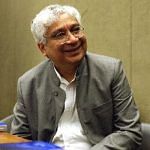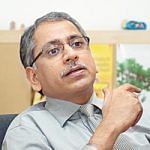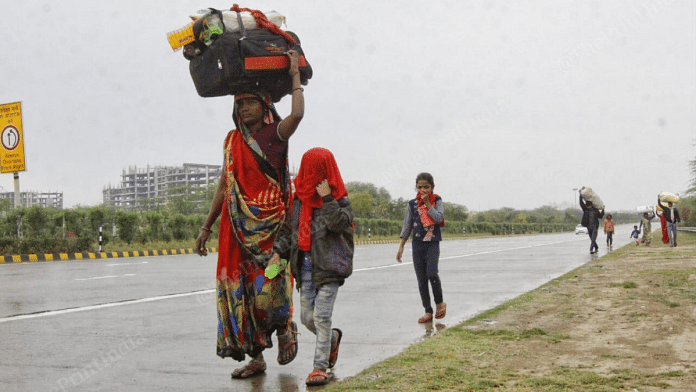 Through the prism of crisis
Through the prism of crisis
Christophe Jaffrelot | Senior research fellow at CERI-Sciences Po/CNRS, Paris
Hemal Thakker | Food and agriculture policy analyst and Student of environment policy, SciencesPo.
The Indian Express
Jaffrelot and Thakker argue that the exodus of thousands of migrant workers returning to their villages due to the lockdown will worsen the already precarious state of Indian agriculture. In states like Bihar and Orissa, for instance, these migrants sent 25 to 50 per cent of their earnings back to the villages. Several reasons have caused the slowdown in agriculture — tillers left land because of shrinking land holdings, irrigation had stagnated, excessive use of pesticides caused farmer debt. The pandemic should be a wake-up call to this agricultural crisis. They note that corrective measures could include agro-ecological transition that could regenerate soil and ensuring sustainable supply of food.
 A Strategic Testing Regime
A Strategic Testing Regime
Kirit S Parikh | Chairperson, Integrated Research and Action for Development (IRAD)
The Times of India
Parikh argues that the 21-day lockdown has not been entirely effective for social distancing as a large part of India’s urban population lives in slums. We need to isolate slums, he writes, in order to localise the problem, test and quarantine those affected. India needs to scale up testing capacities to the level of countries like South Korea, where more than 6 million people have been tested. Following Germany’s example, India could enlarge coverage of testing capacity by mixing swabs of 16 persons in one test to see if signs of infections come up, and then further quarantine and test. As the Supreme Court-mandated, such tests should be made free.
 A time for extraordinary action
A time for extraordinary action
Tejal Kanitkar | National Institute of Advanced Studies, Bengaluru
T. Jayaraman | M. S. Swaminathan Research Foundation
The Hindu
Kanitkar and Jayaraman write that even before the Covid-19 outbreak, Indian’s economy was in “dire straits”, but the lockdown has caused further slowdown. Based on the input-output (IO) model technique, they estimate that India’s loss in GDP ranges from ₹17 lakh crore (7 per cent of GDP) in the most conservative scenario, where the average number of output days lost is only 13, while the loss could be ₹73 lakh crore (33 per cent of GDP) if 67 days are lost. Their calculation points out that debt relief, cash relief to the poor and stimulus packages are necessary. Invoking Kerala CM Pinarayi Vijayan’s statement, they write that “extraordinary times need extraordinary action” along with an “unprecedented scale of state investment”.
 Covid-19: India has done well till now, but lifting the lockdown is not advisable
Covid-19: India has done well till now, but lifting the lockdown is not advisable
Narinder Kumar Mehra | National Chair, Indian Council of Medical Research national chair and former dean (research) the All India Institute of Medical Sciences, New Delhi.
Hindustan Times
Mehra explains that social distancing aims to bring coronavirus’ reproductive rate (R-naught) below one. R-naught refers to the number of people that a single patient of Covid-19 infects. He points out that before China’s lockdown, the R-naught of the virus rose to 2.8, but dropped to below one later, which suggested containment of the epidemic. It’s a positive sign that data indicates few critical cases and limited mortality in India, he notes. The challenge is to sustain the benefits of the lockdown, thus lifting it is not advisable.
 Internationalising the Covid-19 crisis
Internationalising the Covid-19 crisis
Joseph Stiglitz | Nobel laureate in economics, professor at Columbia University
Business Standard
Stiglitz argues that the novel coronavirus “paid no attention” to national frontiers — it is a global pandemic that requires global solutions. He notes that emerging economies will be “ravaged far more by the pandemic” than advanced economies have been. He suggests two things that can be done to aid these developing economies — one, full use must be made of the International Monetary Fund’s Special Drawing Rights, “a form of ‘global money’ that the institution was authorised to create at its founding”. He also calls for creditor countries to announce a stay on developing and emerging economies’ debt service.
 Unlocking the economy: policy roadmap for India after 14 April
Unlocking the economy: policy roadmap for India after 14 April
Deepak Nayyar | Emeritus professor of economics, Jawaharlal Nehru University
Mint
Due to the coronavirus pandemic, the economy will be severely hit by the contraction of output on the supply side and contraction of employment on the demand side, writes Nayyar. He notes that for the economy, the sooner the lockdown is lifted, even partially or in phases, the better. Once the lockdown is lifted, he recommends the following measures — cash support of Rs 6,000 to 75 per cent of rural and urban households along with supplementary free ration, liquidity support and bankruptcy protection to MSMEs by RBI and support at the macro level through fiscal and monetary policies.
 ‘Working From Home’ heralds a more efficient, productive and cost-effective way of post-lockdown working
‘Working From Home’ heralds a more efficient, productive and cost-effective way of post-lockdown working
Harit Nagpal | MD-CEO, Tata Sky
The Economic Times
Nagpal argues that working from home can improve efficiency of workers and make the cost structure even more competitive. He writes that if real estate, office transient cost and our ‘inherent and rather regressive’ doubts about the employees are subtracted, we are staring at an opportunity, not challenge. He adds that during the lockdown period, more policy decisions have been taken while working from home without having to board a plan or stay in a hotel. In conclusion, the author says that he will incorporate working from home twice a week and also use the lockdown as a benchmark for work.
 Covid-19: Err on the side of caution
Covid-19: Err on the side of caution
N. Madhavan | Business journalist
The Hindu Business Line
Madhavan agrees that the longer the lockdown, the more difficult it will be to revive the GDP and it may push an already fragile banking system deeper into the abyss. However, he argues that it is “safer to err on the side of caution and extend the lockdown” considering the current scenario when India’s testing rate is lower than other affected countries.
Today’s Editorials
The Indian Express: When most emerging market currencies have fallen during the Covid period, Indian rupee has fared better than others, notes Express. It writes that Indian rupee continues to be overvalued and should be allowed to fall to correct its overvaluation. Once the global trade picks up, it will aid export growth, the daily comments.
The Times of India: The newspaper writes that Democrat leader Joe Biden could pose a tough challenge for US President Donald Trump. Bernie Sanders has conceded at the right moment with still half a year to go for elections, which will give Biden sufficient time. Biden can bank on his record as Obama’s deputy and galvanise key pillars including black voters, the daily comments. From India’s point of view, we can do business with the US if Biden becomes the president while Sanders’ left-stance made him a “big unknown”, it writes.
Hindustan Times: State governments have begun experimenting with the idea of ‘containment zones’ — which means sealing the areas around the hotspots or where a number of positive cases have been found. This can be termed as the ‘Bhilwara model’ which will allow authorities to identify each person who is infected, offer isolation and treatment, and reduce their interface with the outside world. The newspaper says that with time, the containment zone experiment will emerge as a model whenever the lockdown is lifted.
The Hindu: The newspaper welcomes India’s move to export the hydroxychloroquine drug on humanitarian grounds to neighbouring countries and others which have been badly hit by the pandemic. India might also need test supplies from other countries and may have much to gain from the US in the future by this diplomatic act. India has sufficient production capacity of HCQ and can ramp it up too, if the need arises, says Hindu.
With inputs from Rachel John



